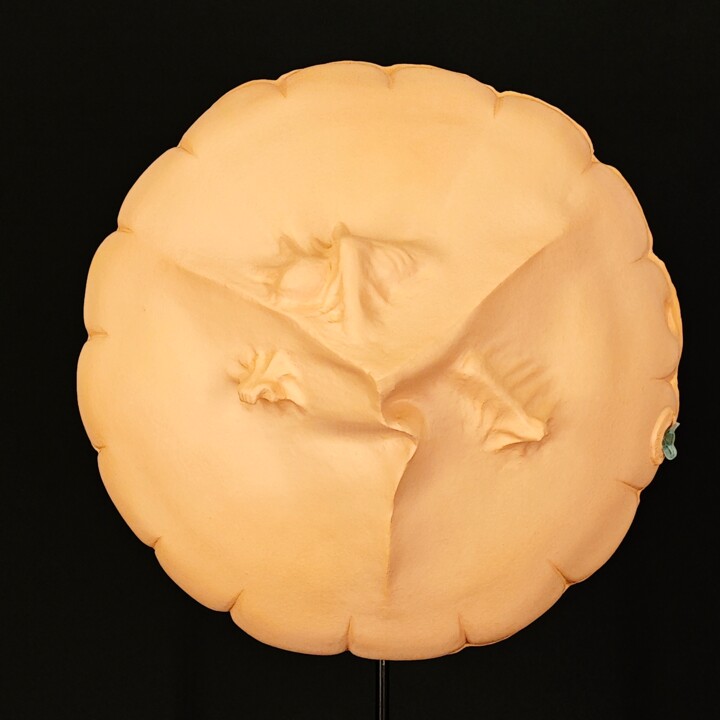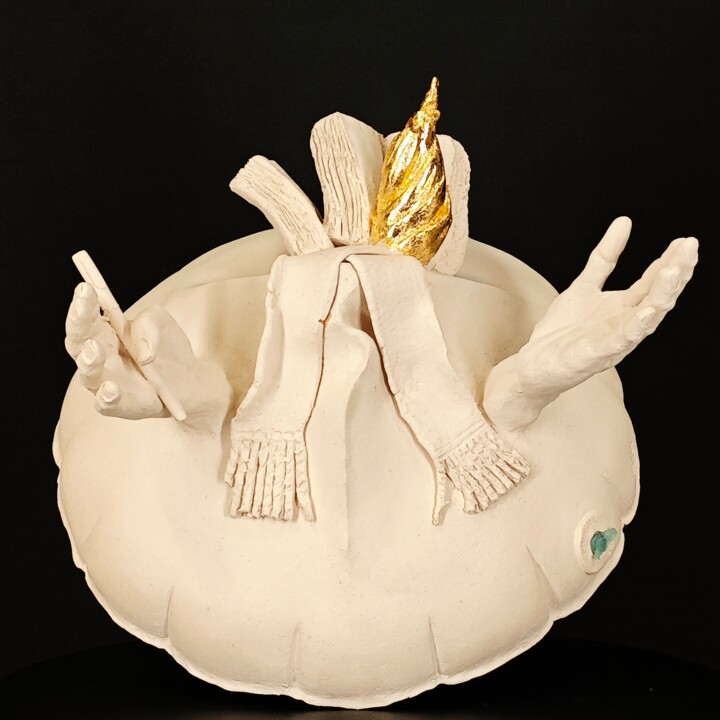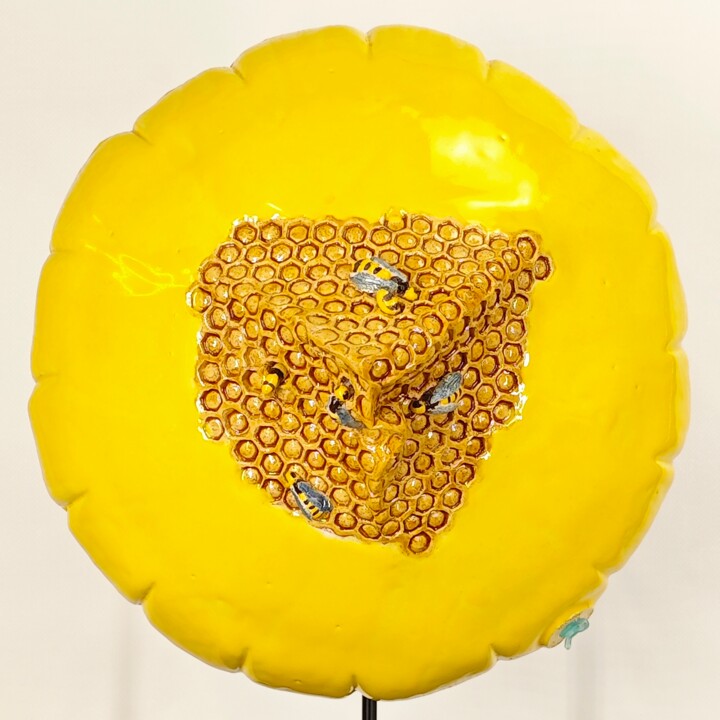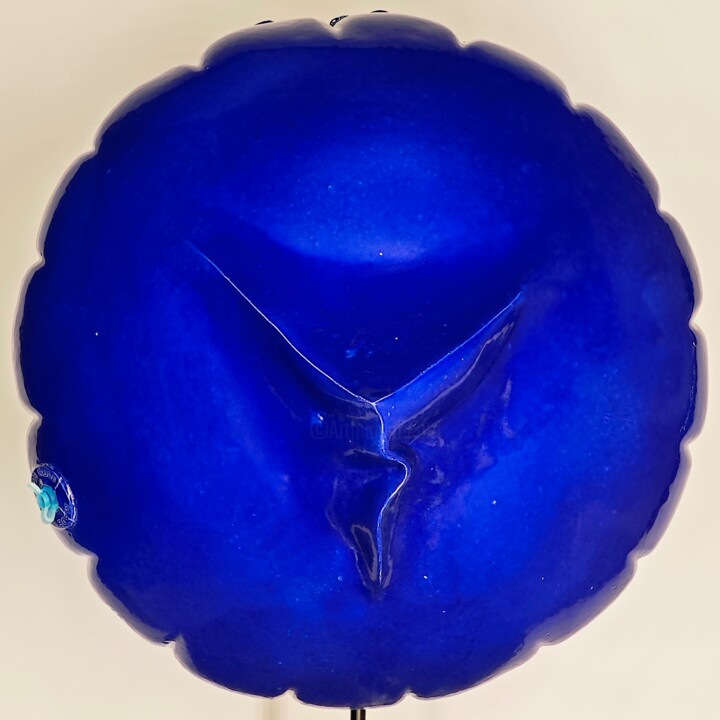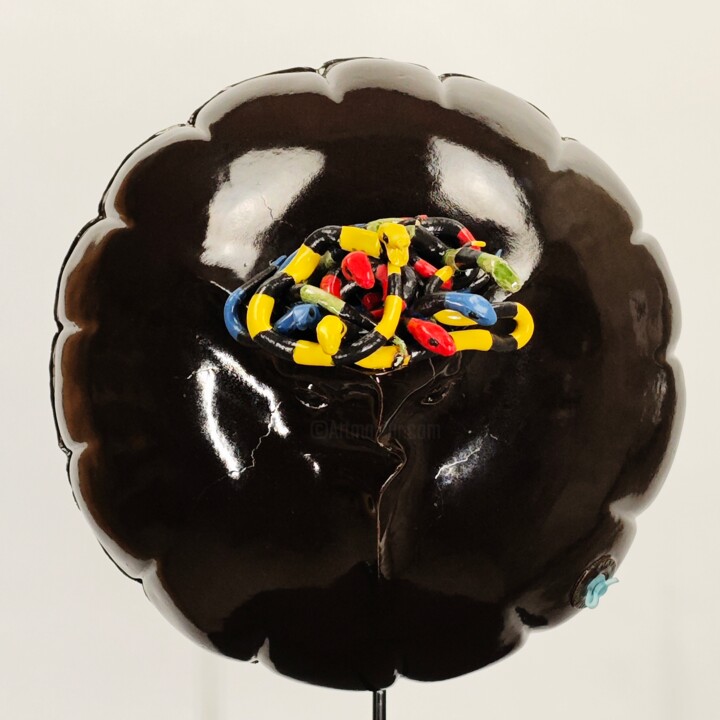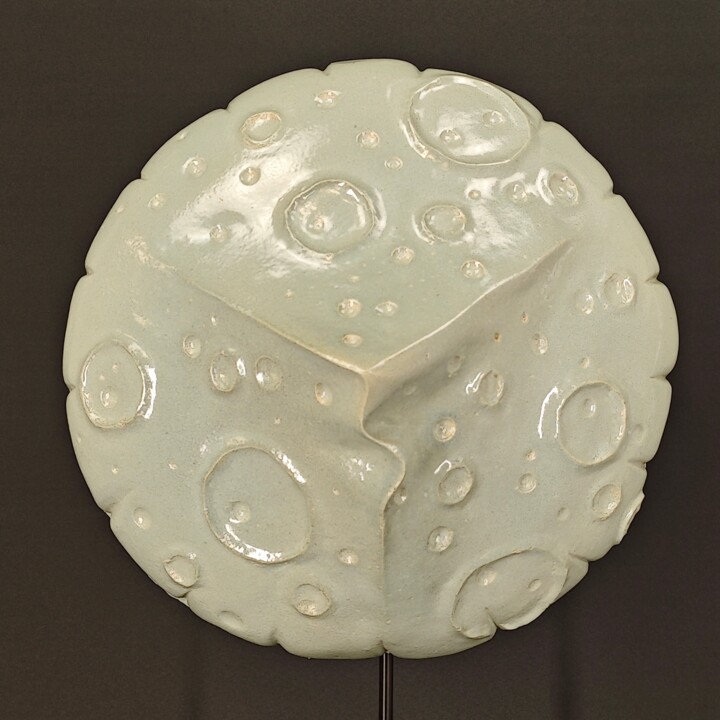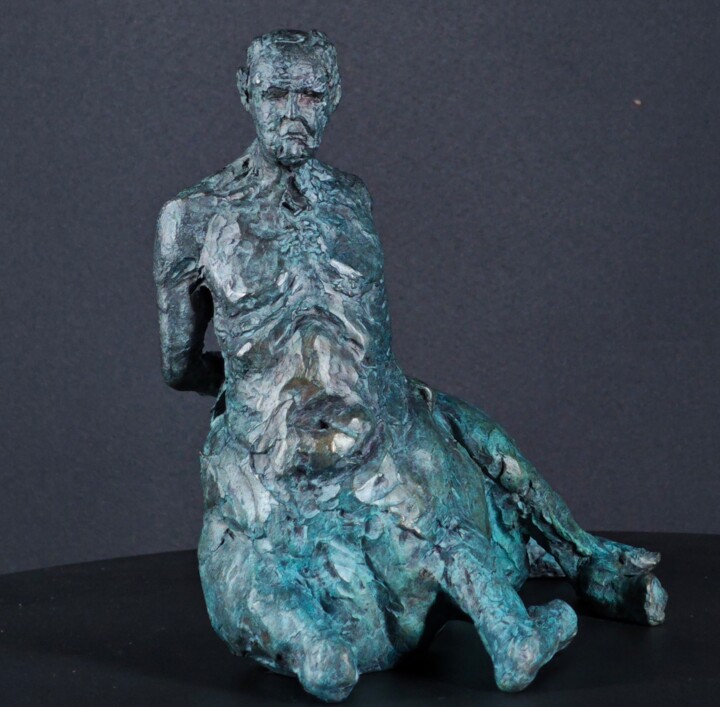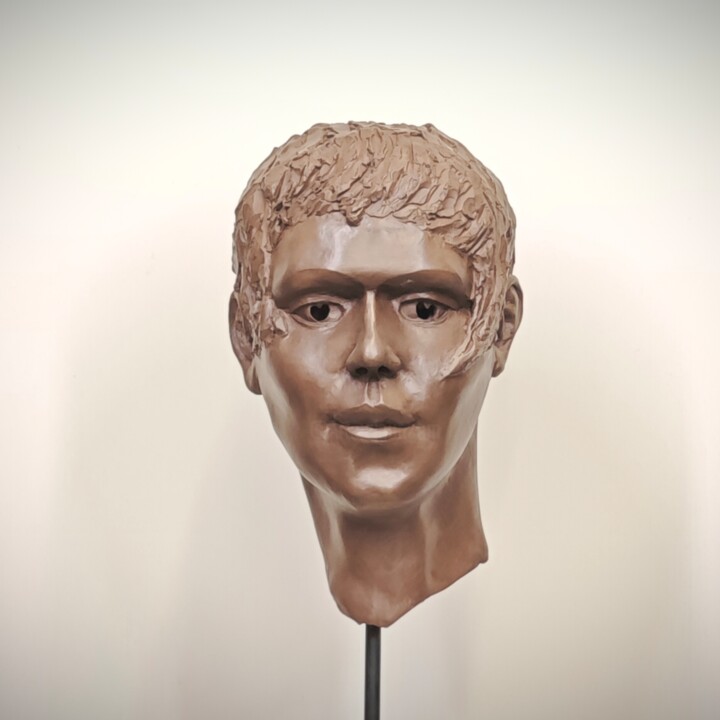What inspired you to create works of art and to become an artist? (Events, feelings, experiences...)?
This great freedom to be singular, in color, in form, in sound, in words… To be able and to dare to express my thoughts and emotions. Stripping myself of a very introverted childhood, crippled by why. A few paintings in adolescence, then the meeting of an Alsatian creator of stained glass windows in Cameroon, who offered me the choice of colors for a stained glass window, when I was only there to help him weld the frames in scrap metal, cutting the glasses according to his designs and fetching the clay from the backwater to hold the glass in a sandwich of two slabs of this earth. Watching me try to model a face in this clay, he explained to me the basics of modelling. He made me make the awls with the shaft of a palm leaf. What an exciting self-discovery, putting your soul at your fingertips.
What is your artistic background, the techniques and subjects you have experimented with so far?
I am a ceramic sculptor from the north of France who, since 2014, has been fully committed to giving shape to my emotions and my intuitive feelings. In parallel with my professional career in the metallurgical industry, I studied and worked on mastering my art with my Masters Hubert Dufour and Yves Guérin who encourage me to embark on this path dedicated to creation. I thus pushed open the heavy gate of the Jardin des Arts to devote myself to Ceramics, a universe of earth and fire where my imagination expresses itself with power, depth and subtlety. From 2020, I participate in my first collective exhibition at Fort de Condé (02), on the theme of "The Great War and after". My monumental sculpture called "Le Cerbère", evocation of the hell of war and mental illnesses such as "the shell" is widely noticed.
The "CUBE" collection, whose original work is in steel struck and crushed on an angle thus drawing the s of Suffering, becomes the standard for a series of variations: wood, resin, ceramic and even jewel in the form of a signet ring. , a kind of identity signature. As an artist, I also deploy this crushed cube to make it my "Vanity" or even a chronological totem with variations of colors and materials symbolizing time spaces and entitled "From Peace to Peace". This shape of "crushing" the cube returns subtly in many sculptures.
Through my encounters and my imaginary journeys, I will discover by baptism of fire the work of copper oxide and smoking. Amazed by the iridescent colors caused by the incidence of light, this technique magnifies my sensitivity and echoes this childish and ephemeral emotion of the rainbow; I thus leave a beautiful part to Nature, to daydreaming, he likes the surprise of the shades of colors linked to thermal shock and oxygen deprivation. The mastery of cooking is reserved for craftsmen, the artist himself, seeks Emotion.
What are the 3 aspects that differentiate you from other artists, making your work unique?
The crushed cube that is often found as a signature in my creations. The use of this form to avoid the ruts of artistic currents, which allows me to create according to my moods in all these currents, classic, abstract, contemporary, conceptual, surrealist... and to be able to design it in wood, in resin clay, jewelry. The use of terracotta makes it possible to leave a large part to nature to make the works unique, to be surprised by a color when it comes out of the oven. I let the earth, and the enamels harmonize to become emotion.
Where does your inspiration come from?
Of the joyful quality of my boredom.
What is your artistic approach? What visions, sensations or feelings do you want to evoke in the viewer?
I consider that my sculptures once finished no longer belong to me, they belong to those who look at them. They become enigmas, emotions, surprises, daydreams or stories...
What is the process of creating your works? Spontaneous or with a long preparatory process (technical, inspiration from art classics or other)?
My inspiration can come from strong emotions such as the anger of mourning, from a situation of well-being without artifice, from historical research, from reading a little book "The abridged dictionary of the fable" from 1748... in old François of figures and mythological subjects. Or completely instinctive in the search for form caressing my gaze. Music can also be a source of inspiration.
Do you use a particular working technique? if so, can you explain it?
Using the same clay, some of my sculptures require a very technical first approach to avoid sagging, cracks, or breakage during cooking. I often prepare supports in wood, in metal, in string then I mount the volumes until the sculpture takes the soul, then it is nothing more than discussions between my fingers and itself. If it doesn't take the soul, it's because the magic didn't work, so the earth goes back to its pile.
Are there any innovative aspects in your work? Can you tell us which ones?
Creating my own tools, my supports, and not having followed a technical study in the art of sculpture, I would not be able to say if I borrow technique or if I am innovative.
Do you have a format or medium that you are most comfortable with? if yes, why ?
My preferred support remains clay, clay sandstone in particular. This support lives throughout the execution and the birth of my sculptures; the earth is very docile when you understand its character. It's a long process that requires tenacity and abnegation before starting the path of artistic creation. It would be difficult for me to change soil today, because I now know its cooking curves, its post-cooking possibilities.
Where do you produce your works? At home, in a shared workshop or in your own workshop? And in this space, how do you organize your creative work?
I produce my sculptures in my own studio which I have set up in my own way. This workshop and an outbuilding independent of my home. It is also important for me to have designed this space, it is my framework, my cocoon which allows me to express myself by freeing myself from all external structure. My studio is introverted so that I can be extroverted in my art.
Does your work lead you to travel to meet new collectors, for fairs or exhibitions? If so, what does it bring you?
Having set up my studio during these two years of confinement, my work is still imbued with intimacy; I exhibit it very little apart from your dematerialized gallery and one or two regional exhibitions a year.
How do you imagine the evolution of your work and your career as an artist in the future?
I advance little by little; I made my first bronze this year “Liriope”, which is a new step. I have another sculpture that will become bronze this year. "Liriope" has, I think was appreciated on your site, now I have to confirm.
What is the theme, style or technique of your latest artistic production?
My latest production in progress is a talk of five refined forms in terracotta. They are laid out in the workshop waiting for a color coat. The style is contemporary. They should leave their workshop in about 3 months. They pose with me in the photo in my studio.
Can you tell us about your most important exhibition experience?
It was this summer in Brouage in the forge prison of Brouage in Charente Maritime, a magnificent place where the graffiti of prisoners leaving for the Americas are still inscribed. Lots of summer visitors of all ages. I received great compliments on my work. I sold a work and exchanged another with a painter.
If you could have created a famous work in the history of art, which one would you choose? And why ?
“Ugolin and his sons” by Jean Baptiste Carpeaux; It was by reproducing this sculpture for study that I decided that I would be a sculptor. The precise moment of beautiful decision.
If you could invite one famous artist (dead or alive) to dinner, who would it be? How would you suggest he spend the evening?
Pierre Soulage, sitting in two deckchairs in the middle of a pasture in a dark night, talking about the light emanating from the sounds of running water from a nearby stream.



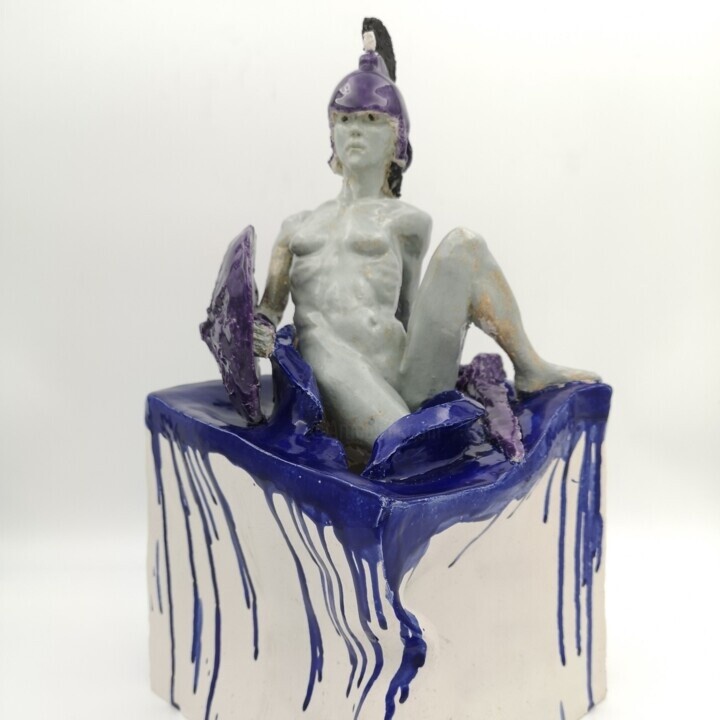
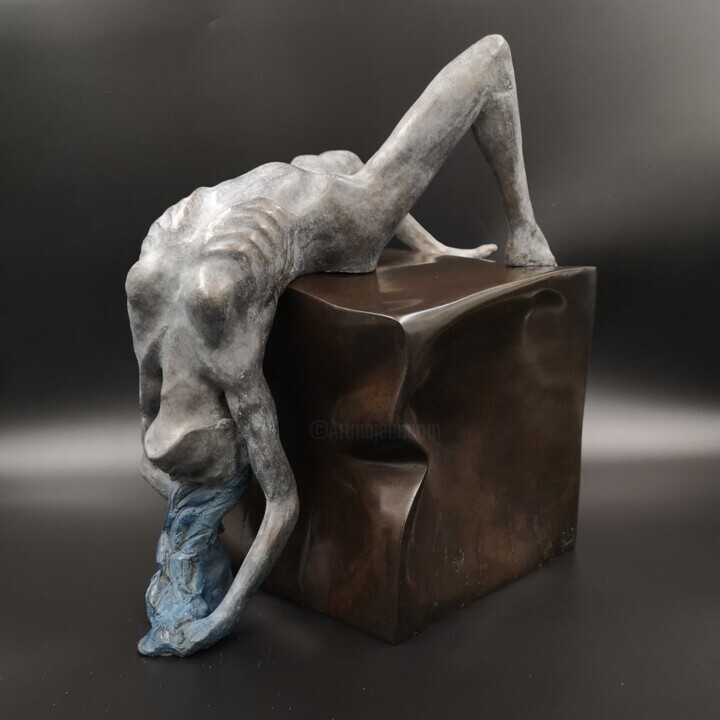

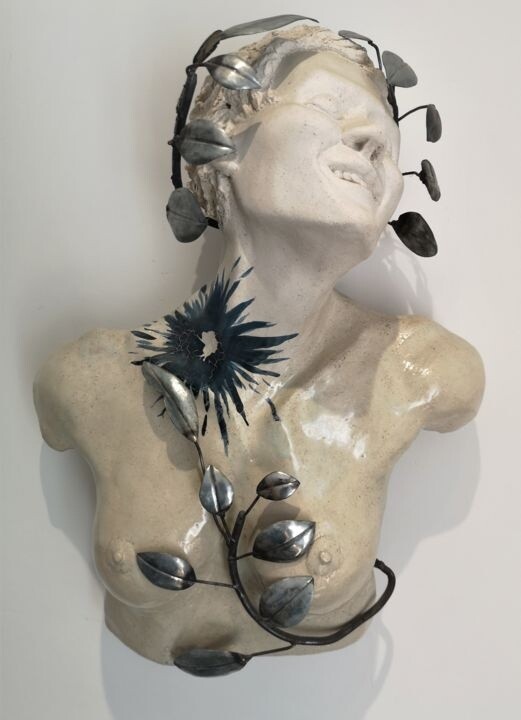
 Olimpia Gaia Martinelli
Olimpia Gaia Martinelli

